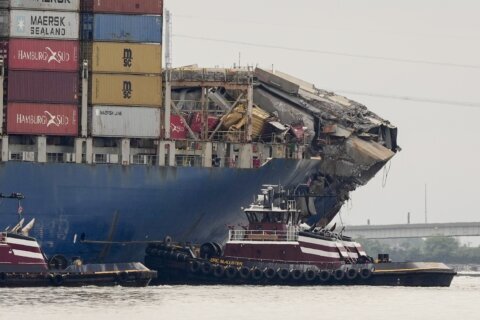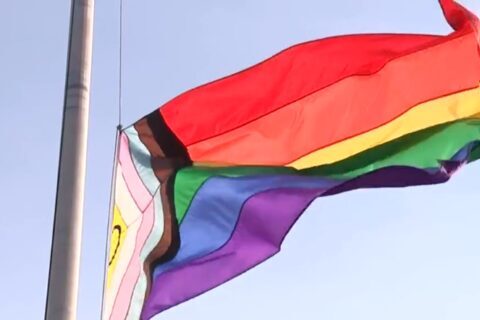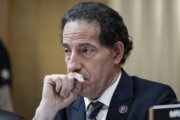ANNAPOLIS, Md. (AP) — Maryland’s six-year capital transportation plan will decrease by $1.3 billion, according to a draft plan released Tuesday, reflecting operating costs that are outpacing revenue growth, state officials said.
The reduction in the $18.9 billion program for fiscal years 2025 to 2030 will result in some deferred projects, such as sidewalk repair and intersection improvements, officials said. It also will delay the transition to the electrification of the state’s bus fleet.
“Despite significant budgetary challenges, the Maryland Department of Transportation continues to prioritize the safety of all who use our transportation system and make investments in projects that will help grow our economy,” Maryland Transportation Secretary Paul Wiedefeld said in a news release.
For example, the state will proceed with plans for the Frederick Douglass Tunnel to replace the 1.4-mile (2.3-kilometer) Baltimore & Potomac Tunnel that connects Baltimore’s Penn station to MARC’s West Baltimore Station. The state will also continue plans for the Howard Street Tunnel to create vertical clearance improvements along CSX’s Rail Corridor to allow double-stack trains to travel between Baltimore and Philadelphia.
The proposal also won’t affect plans to rebuild the Francis Scott Key Bridge, which collapsed under the impact of a massive container ship that lost power and crashed into one of its supporting columns.
The state also is proceeding with the project development process for the Baltimore Red Line and Southern Maryland Rapid Transit, the department said.
Revenue forecasts for several state transportation funding sources, including the gas tax, vehicle titling tax, transit fares and vehicle registration, were revised downward to reflect results from this past fiscal year, the department said.
That, combined with existing funding commitments such as operating expenses, support for local governments through increased highway user revenues and Purple Line payments, left the department with fewer state dollars than anticipated to match federal funding for highway and transit projects. The Purple Line is a 16-mile (26-kilometer) light rail line in the suburbs of the nation’s capital that connects New Carrollton in Prince George’s County to Bethesda in Montgomery County.
The reduced ability to fully leverage federal funds is a driving factor behind the $1.3 billion in reductions and will result in certain projects being deferred because of fiscal constraints, the department said. The end of federal pandemic relief, inflation and supply chain disruptions have also had an impact.
Some of the deferrals include system preservation needs, transitioning the Maryland Transit Administration’s bus fleet to zero emission vehicles and pausing the design of major highway expansion projects at logical milestones, the department said in a news release.
The release of the draft program launches the department’s public engagement process. That includes a meeting in every Maryland county and the city of Baltimore to receive input from local officials and the public. This year’s tour is scheduled to take place between September and October with local jurisdictions hosting the meetings.
After the tour, the transportation department will finalize the draft plan and submit a final plan to the legislature in January.
Last year, the department cut the six-year plan by $3.3 billion. Those reductions were eased when Gov. Wes Moore allocated $150 million of the state’s rainy day fund to help offset the cuts. The legislature also responded by approving vehicle registration increases.
Copyright © 2024 The Associated Press. All rights reserved. This material may not be published, broadcast, written or redistributed.







